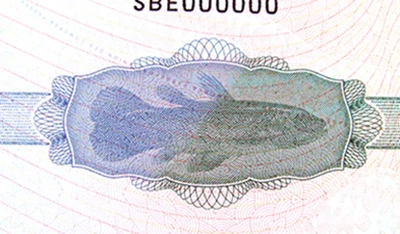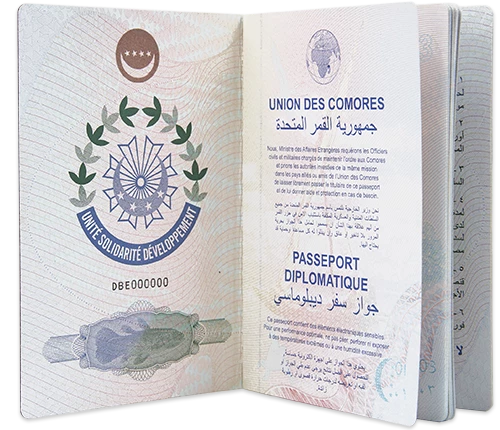
Passports
Our products
The passports produced by Semlex strictly comply with the obligations and recommendations of document n°9303 of the ICAO (International Civil Aviation Organization).
General specifications
In electronic passports, biometric data is stored on an embedded contactless chip.
ICAO specifications
A contactless chip contains at least the optical data present in the automatic reading zone of the biographical data page of the passport as well as the photo of the face. Any electronic passport that complies with ICAO specifications includes the international logo symbolizing the electronic passport on the front cover of the booklet.
Data security
To ensure data security, basic access control is used as well as extended access control (terminal authentication) in the machine-readable document zone (MRZ); the exchange of data is protected by means of a cryptographic protocol of the “Public Key Infrastructure” (PKI) type.
Sizes
ISO 7810 dimensions in ID3 format: 88mm (+/-0.75mm) x 125mm (+/-0.75mm).
Tailor-made adaptation
These features are not restricted and may be adjusted as per the government’s needs.
Our securities
In order to guarantee the fiduciary security of your documents and to avoid their falsification, technical characteristics are proposed to you:
Paper characteristics
Booklet paper will offer appropriate ruggedness and absorption characteristics. Fibers with fluorescent properties (visible under UV light) are mixed into the paper pulp during the paper manufacturing process to serve as a security feature. They may be visible (colored fibers) or invisible under normal light.
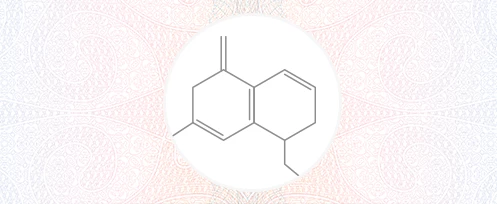
Hot foil stamping
Hot foil stamping mainly involves the transfer of foil by means of a heated stamping die.
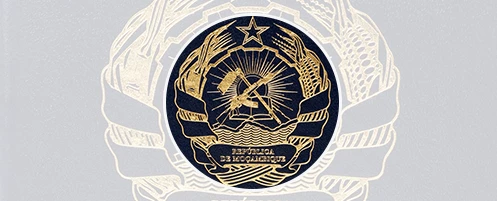
Infrared ink
Ink visible only under infrared light.
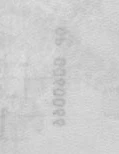
Iridescent ink
Thin film deposited on tiny mica flakes causing interferences with the incident light. This creates shiny, pearl-like shimmering effects.

Optically variable ink (OVI)
Printing ink containing optically variable pigments which will show large color shifts (strong variations in color) depending on the angle of observation or lighting.
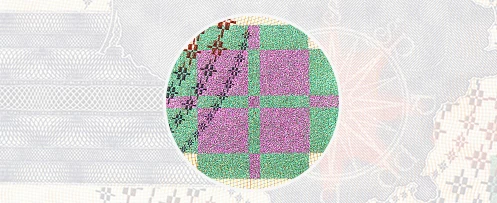
Photochromic ink
Photochromic inks change their color when exposed to sunlight and remain for a certain time before the color reverts to its original state.
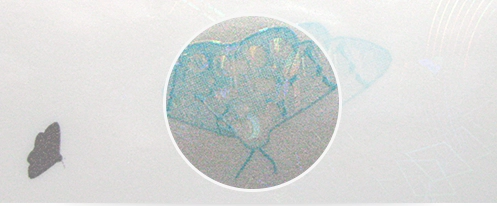
UV fluorescent ink
Ink containing fluorescent substances (pigments) which is used to print text or patterns. This type of ink fluoresces under UV light.
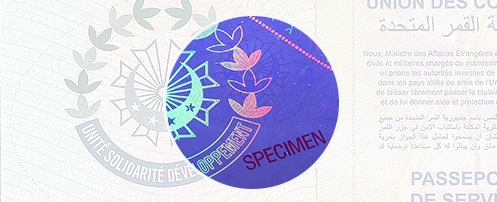
Fluorescent thread
Pages can be held together with a thread (can also consist of several individual, interlaced, threads), which fluoresces in one or several colors seen when exposed to UV light.
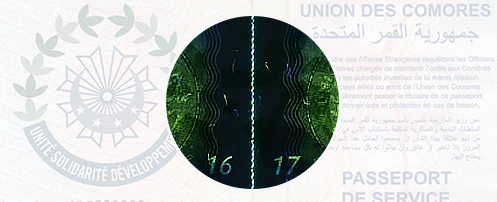
Watermark
The watermark is a picture, text or character motif, which is incorporated into the paper during manufacture by displacement of the paper fibers, leading to a varying thickness of the paper.
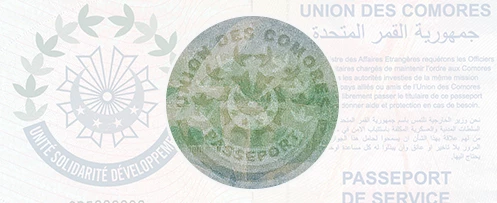
Cover embossing
Elements of the security film perceptible to the touch.
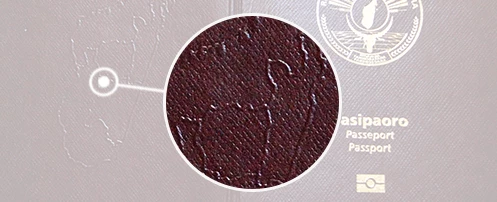
Guillochis
Fine (intricate) designs consisting of interlaced continuous lines arranged in geometric patterns with the aim of raising the barrier for re-origination and reproduction.

Rainbow coloring
This coloring process used in offset printing is used to protect security documents against color separation or copying, by subtly merging colors into each other resulting in a gradual color change.
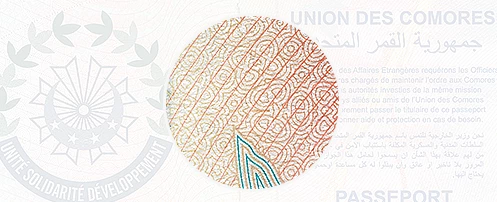
Holographic laminate
Holographic film that is affixed to the personal data page by means of pressure (cold-applied laminate) and/or heat (heat-applied laminate) to protect data entries against falsification.
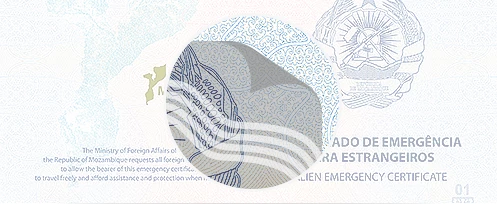
Microprint
Lines or patterns made up of very small letters or numbers that are barely perceptible to the eye that basic methods of reproduction cannot reproduce.
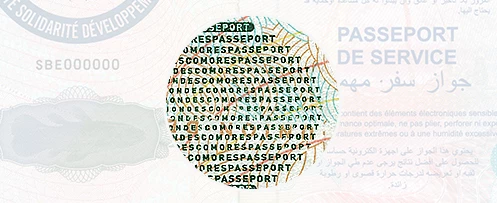
Anti-scan/copy patterns
Printed security features integrated in the background printing to protect against simulation through copying. The printed images and patterns contain embedded (hidden) information that is invisible to the naked eye under normal inspection conditions but becomes visible or legible, or causes flaws (mistakes) to appear after copying or reproduction with a scanner.
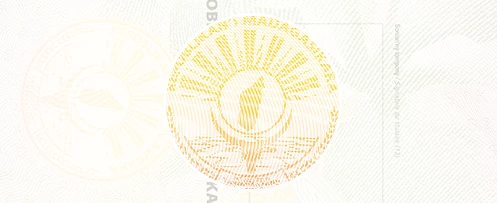
Serial number
A unique sequential number that is printed and perforated in the passport, which allows the document to be traced if it is lost or stolen.
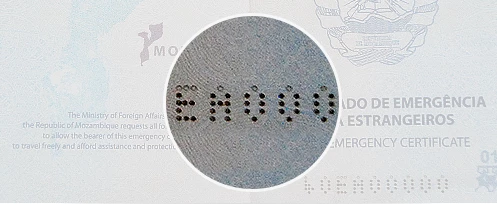
Intaglio printing and latent image
Printing technique whereby the image to be printed is etched or engraved in the surface of a printing plate. This technique is suitable for the effect of a latent image, which appears depending on the angle of the oblique light.
